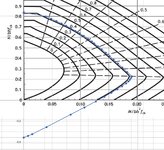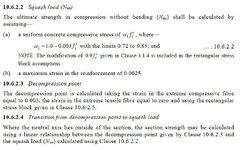Pretty Girl
Structural
- Nov 22, 2022
- 148
The below is the N-M interaction chart for Eurocode for a biaxial concrete column.
Do Australian standards provide any guidance to come up with the N-M interaction diagram? Which clauses I need to look at if I want to make our chart compliant with AS 3600?
I want to know the calculations which involves with this and especially the limits, caps, and other considerations to make it AS 3600 compliant.
Does it have some different way of calculating strains for pure compression and when column is not in pure compression?
How do I construct a chart which is compliant to Australian standards?
@IDS @Celt83

Do Australian standards provide any guidance to come up with the N-M interaction diagram? Which clauses I need to look at if I want to make our chart compliant with AS 3600?
I want to know the calculations which involves with this and especially the limits, caps, and other considerations to make it AS 3600 compliant.
Does it have some different way of calculating strains for pure compression and when column is not in pure compression?
How do I construct a chart which is compliant to Australian standards?
@IDS @Celt83



